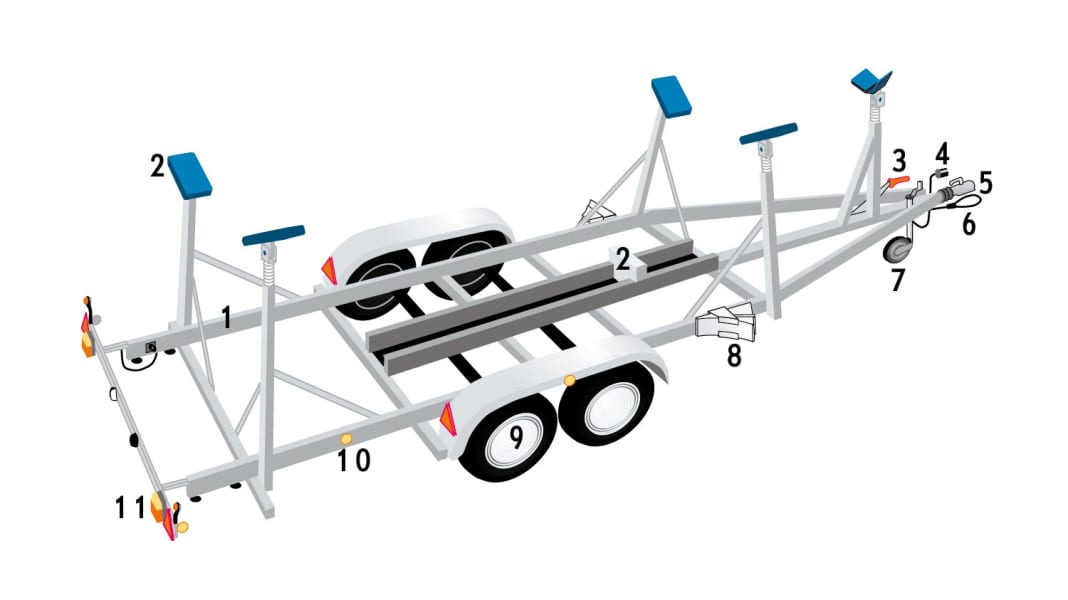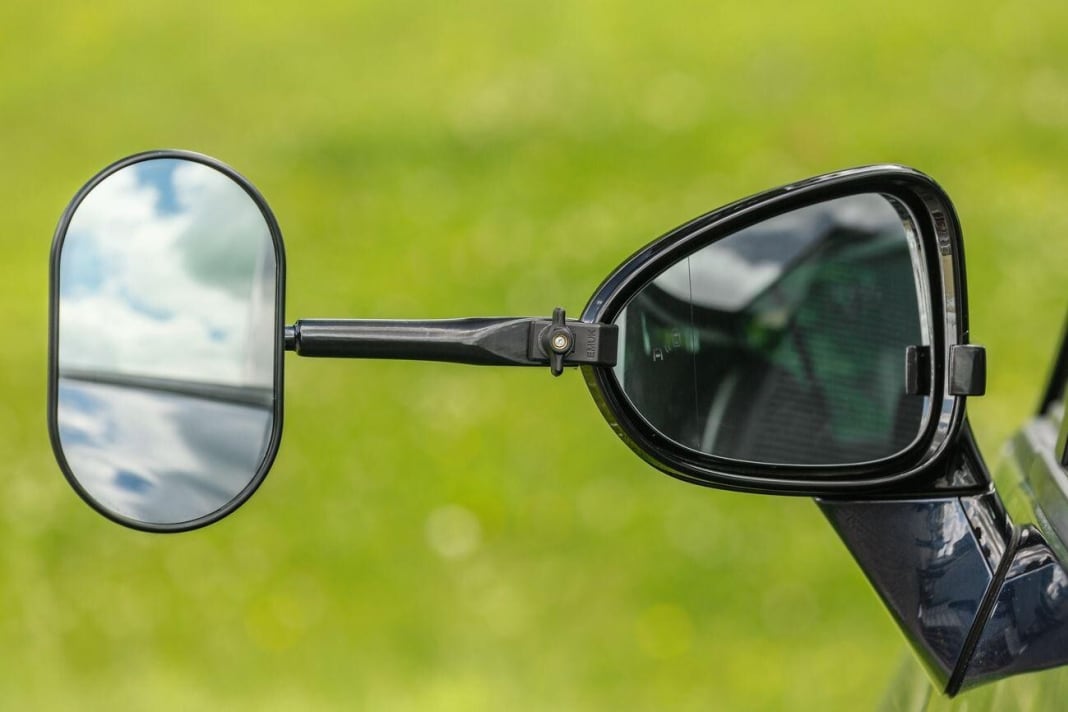
This article is part of a trailer special:
Material (1)
Most trailers are made of steel, which is galvanised for corrosion protection. Advantage: inexpensive and easy to weld, even for repairs. If every kilogram of the trailer load is important, aluminium is an alternative. Higher material thicknesses and the need for anodising or painting reduce the weight advantage - at a significantly higher price. Stainless steel offers the best corrosion protection, but is the most expensive and, like aluminium, is more complex to weld. This limits the choice of suitable workshops for repairs.
Conditions (2)
The side supports only serve to stabilise the sides of the boat, it should not rest on them with its load - they could break or press into the hull. For this reason, large-surface supports are also better than rubber rollers, for example. The main load should be borne by the keel support. Side and front elevations make it easier to float the boat when trailering and prevent it from slipping on the road. Tip: If the boat is to be left on the trailer for a very long time, for example in winter storage, place an air-permeable intermediate layer such as a fleece between the boat and the padding - otherwise osmosis could occur due to moisture in the padding.
Brake (3)
The permissible trailer load braked/unbraked can be found in the vehicle registration document. A braked trailer is significantly safer in dangerous situations than an unbraked one. In addition, the fitted handbrake makes some slipping operations considerably easier. Caution: Do not leave the handbrake applied when the trailer is parked for long periods, as the brake drums could rust.
Plug (4)
There are 13-pin (modern) and 7-pin versions. Carry an adapter to be on the safe side.
Clutch (5)
Ball couplings are approved for up to 3.5 tonnes, above this, jaw couplings must be used. The ball should be lightly greased to reduce wear on the coupling and avoid unpleasant friction noises.
Safety rope (6)
Must be attached to the vehicle, preferably in an extra eyelet (mandatory in Holland). If the trailer comes loose, the trailer brake is applied.
Support wheel (7)
A must for drawbar loads of 50 to 100 kilograms! Manoeuvring by hand and coupling and uncoupling are otherwise almost impossible. The permissible drawbar load is based on the information in the vehicle and trailer documents, the lower value applies. It should be utilised to the maximum for better driving behaviour. The drawbar load must be added to the total weight of the towing vehicle. To tow the trailer, turn the jockey wheel all the way up and secure the spindle with a rope to prevent it from coming loose. The wheel should always point slightly to the right in the direction of travel. If the trailer comes loose, it will roll sideways off the road and not into oncoming traffic.
Wedges (8)
Trailers with a gross vehicle weight of 750 kilograms or more must have two wheel chocks. However, these are also advisable for lighter trailers, as such trailers are usually unbraked. Plastic chocks can age quickly and become brittle when exposed to UV radiation; often the brackets break first, then the chocks themselves. Both cost very little and should therefore be checked regularly and replaced if necessary.
Axles (9)
Two axles distribute the load better, especially on the tyres, which wear less quickly and do not reach their load limit as quickly. However, two-axle trailers are much more difficult to manoeuvre by hand than single-axle trailers, as the two pairs of tyres have different radii and work against each other, which leads to a lot of friction on the road. Therefore, when manoeuvring by hand, either move the front wheel in or out as far as possible so that one of the two pairs of tyres offers the least possible resistance.
Lighting page (10)
From a trailer width of 2.10 metres, the trailer must be equipped with a white, forward-facing clearance light and a red, rear-facing clearance light on each side. Trailers that are longer than six metres must have side-acting yellow, non-triangular spotlights on the long sides. For such trailers - put on the market from 1994 onwards - amber side marker lights are also mandatory!
Rear lighting (11)
Like the towing vehicle, the trailer must also be equipped with functioning rear lights, brake lights, indicators, rear fog light, licence plate lights and two reflectors. Self-illuminating licence plates do not require any extra lighting, but they must not be confused with reflective licence plates.
Useful accessories
Safety when driving a trailer can be significantly improved with little investment. 5 clever helpers for trailers in the photo gallery







